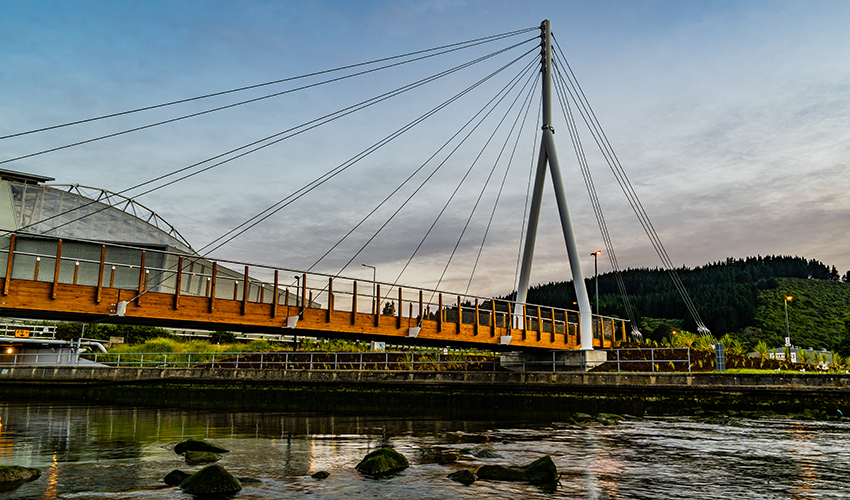Cable Stayed Bridges | Edifice Structures
A cable-stayed bridge is held by relying on a series of cables attached to one or more towers supporting the bridge deck. Unlike suspension bridges, where the cables are anchored to the ground, cable-stayed bridges have their cables anchored directly to the towers. This design provides enhanced structural stability and distributes the load more evenly.
The construction process of cable-stayed bridges involves the following:
Towers: Cable-stayed bridges feature towers that serve as the main support for the structure. These towers are positioned at regular intervals along the span and are designed to withstand the forces imposed by the cables and the bridge deck.
Cables: The cables of a cable-stayed bridge are tensioned and anchored at the top of the towers. These high-strength steel cables distribute the weight of the bridge deck to the towers, supporting the structure.
Bridge Deck: The bridge deck refers to the main walkway, designed to withstand the loads imposed by traffic, wind, and other environmental factors.
The construction phase encompasses building the towers, installing and tensioning the cables, and finally, constructing the bridge deck.
Cable-stayed bridges have many advantages:
Structural Efficiency: Cable-stayed bridges provide excellent structural efficiency by utilizing materials. The cables’ tensioning helps to evenly distribute loads, reducing the amount of material needed for the bridge deck and supporting elements.
Aesthetic Appeal: These bridges often exhibit an elegant and visually striking appearance, with the cables and towers creating a distinct architectural presence.
Flexibility in Design: Cable-stayed bridges offer design flexibility, allowing for various configurations and span lengths. The number of towers, cable arrangements, and bridge deck materials can be tailored to suit specific requirements and site conditions.
Construction Speed: Compared to other bridge types, cable-stayed bridges can be constructed relatively quickly. The modular nature of their construction allows for concurrent work on different segments, reducing overall construction time.
Maintenance and Durability: Cable-stayed bridges generally require less maintenance compared to suspension bridges due to their simpler cable arrangements. The structure’s durability and resilience make it suitable for challenging environments, including seismic zones and high-wind areas.
Cable-stayed bridges are widely used for river crossings, estuaries, and urban areas where longer spans and visually appealing designs are desired. They have become an integral part of modern infrastructure, connecting communities, and showcasing the ingenuity of engineering and architecture.
It’s important to note that any disadvantages of cable-stayed bridges are able to be mitigated or outweighed by their advantages in most situations. Each bridge project requires a careful evaluation of the specific needs, budget, environmental factors, and long-term maintenance considerations to determine the most appropriate bridge type for the specific situation.








